The term project could be used for anything, from going out to dinner to building a nuclear power plant. So what does the term project mean? We will address this question from different perspectives. We will discuss the term from a service provider viewpoint and a project owner perspective. Further, we will split the project owner perspectives and consider the question from an existing organization viewpoint and from the perspective of a new investment. In this article and video, we will also have a peek into asset management. Finally, we address the question, do all “projects” require project management?
Continue to read and look for the video. Although the article and video are related, they do complement each other; not duplicates. In another word, the article is not the transcript of the video.
What triggered this article and video is a discussion with a colleague, who is participating in a SUKAD PM Quest Course, Mr. Mohamed Al-Awadhi. Mohamed is using the course and the CAMMPTM Model to launch a new business, a venture.
A long article but we think it is worth your time.
What does the term project mean?
We can look at this question from many angles. If you check the definition of a project in a dictionary, it could mean anything from a basic task to a new business venture. As a result of this question, we often find gaps in practice and even in the academic world. Consequently, due to the confusion (or different perspectives) on what is a project, we can expect confusion on how to manage the project.
In this article and associated video, we will touch on this question from two major perspectives:
- Service Provider, and
- Project Owner.
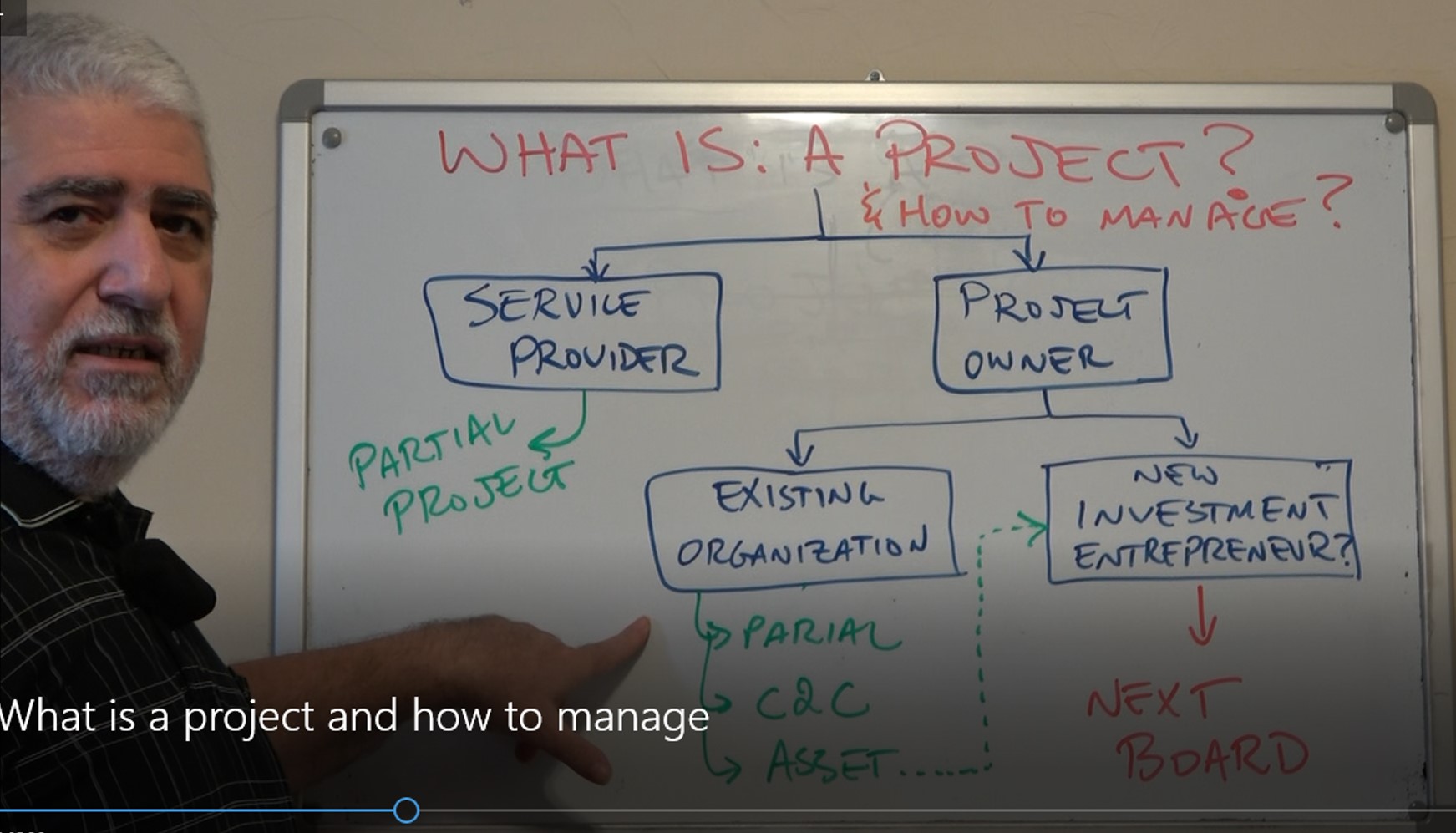
Service Provider Perspective
What does the term project mean in this context?
We are using this term to refer to organizations that generate their revenues from delivering services = projects (or parts of projects) to an external customer. These could be engineering companies, IT service providers, construction contractors, strategic or business consultants, or anything else that might resemble a project.
In these scenarios, the term project – MOST LIKELY – refers to a piece of a project; a piece of a client’s project. In other words, YOUR project (service provider) could be to develop a software application for a business project. It could be constructing a house or a tower.
What position title is suitable?
It is common practice to use the term Project Manager to the person leading this work. Out of convenience, this is OK. However, this is not the proper term since this position is not responsible for the whole project, concept to closure. The position is only responsible for a Piece-of-the-Project. A better term might be a contract manager or a project lead.
How to manage these “projects”?
Notice we used the quotation mark around the word project. We are using this format to remind you that these are not a full project but a piece of the project.
Again, for convenience, it does not matter what you call it. The only thing that matter is to understand the difference between managing a piece and managing the whole. This is one reason when we hear the term Agile Project Manager or Agile Project Management. We think these terms are an oxymoron since, technically, Agile is not about managing the whole it is about the work on a piece, the development piece or stage of the project.
I do not want to go into too many details, so I close this part with this statement:
Possible approach
To manage these “projects” we can use the processes for managing a stage or phase of the project. PMBOK Guide, ISO 21500 have what is required, in the SUKAD CAMMP Model we have a more advanced perspective on how to manage a phase or stage. The following image is the SUKAD six main processes to manage a stage of the project.
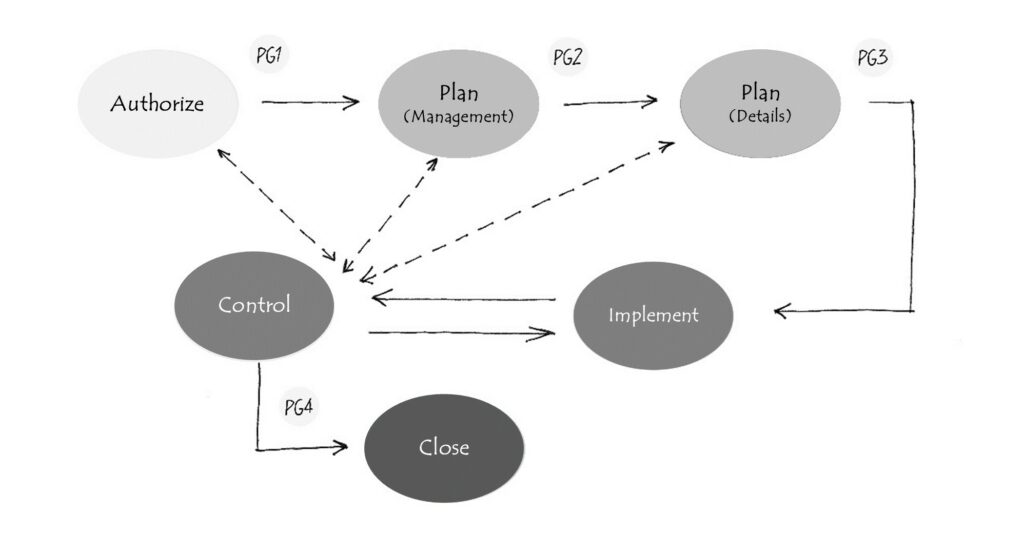
Project Owner Perspective
In this area, we must look at the question from two different scenarios.
- Existing Organization
- New Venture
A. Existing Organization
For an existing organization, we could have three further scenarios:
Scenario 1: Partial Project
This scenario applies when a department, a business unit, would be working on a piece of a project. For example, an IT department working on a business project for the HR, Finance, or any other department. In this case, the IT department is the “implementation or development agency”. In these situations, the department and the person leading the work is only managing a piece of the project. It is an identical scenario (almost) to the service provider scenario, except in this case the customer is internal.
In summary, these are partial “projects” and we manage them using a phase/stage management approach, like what we presented earlier.
Scenario 2: C2C Project
What are these projects?
What does the term project mean in this context?
C2C is a term I like to use to refer to Concept-to-Closure; meaning covering a project from the idea and initial concept to closure of the project. In this scenario, a project is a term we use in the context of the study of project management. The project, in this case, is about delivering an output that should help realize benefits. For example, a project to build a water bottling plant and in this context to build the plant we follow a project life cycle approach from the idea to closure.
Relevant Definitions
Some relevant definition to the above – to be clear about terminology.
- Project: a complete project from concept to closure that would produce an output to realize an outcome, and follow a project life cycle methodological approach.
- Output: the water bottling plant (the product of the project),
- Bottled Water: consumer products that would be produced by the plant to generate revenue and profit.
- Outcome: outcome is the result of the project. The realized benefits. The profit from the bottled water.
- Project Life Cycle: the lifespan of a project from concept to closure, which consists of phases and stages (per CAMMP).
- Closure: in this case, closure happens after the customer (internal) accept the product (the output) of the project. Therefore, closure is the commencement – the transition of “the work” from being a project into an operational mode.
How to manage these projects?
We manage these projects using a stage-gate process, a methodological approach, often following tailored methods. CAMMP™, The Customizable and Adaptable Methodology for Managing Projects™, is the approach that SUKAD offer that is ideal for C2C management or even partial project management. It is also an essential component of the next type of projects, Asset Management.
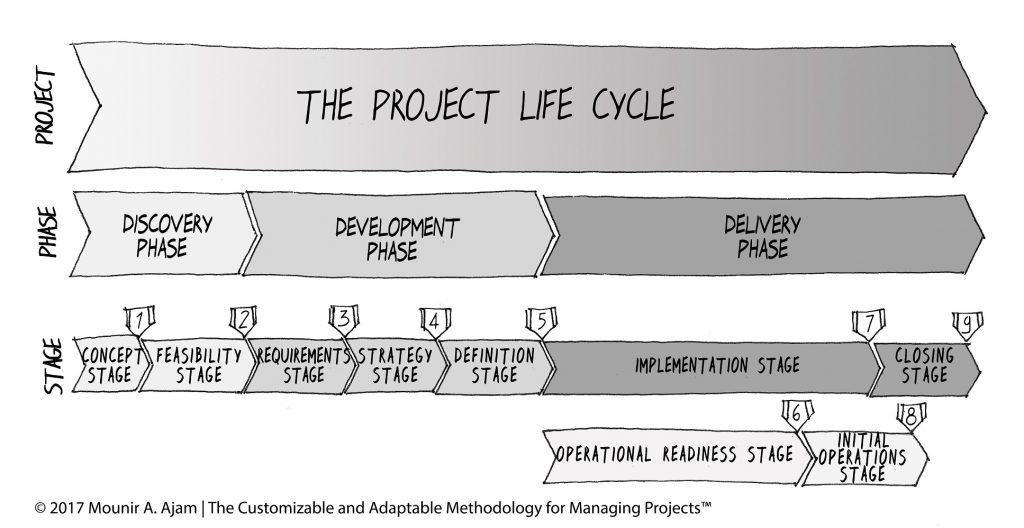
Scenario 3: Asset Management
What are these projects?
What does the term project mean in this context?
These are the same thing as the C2C projects; except, in this scenario, we are considering organizations that have matured their practices to have a holistic perspective, which views projects and the project life cycle as an integrated part of asset management.
What does that mean?
It means too many things to cover in this article or video; need a book. But the short answer is to think of the whole product life cycle, the asset. This would include better decision making on project selection. It means considering operation and maintenance when making “project” decisions. Asset Management would be significantly more comprehensive and would include numerous areas of studies. The bottom line, the organization think of these things as business ventures, not C2C projects.
Another way of thinking about scenario 2 and 3 is that a project (as presented in scenario 2) is the acquisition phase of an asset (first phase in the product —- ASSET — life cycle).
How to manage these projects or ventures?
More on this in the next section.
B. New Venture
What is a project in this scenario?
This scenario would be applicable to entrepreneurs, investors, investment companies, venture capitalists, incubators, and any organization thinking, leading or is involved in a new venture. When any of these categories of people/organizations use the term project, they are likely to refer to a new venture, a new business, which would include launching a new legal entity.
How to manage?
Here is the challenge, there is no single person or science or a college degree that would give the professional community to manage these ventures, end-to-end. The science of managing these ventures is fragmented into many areas. Let me elaborate, but after covering a possible challenge and gap in practice.
The potential challenge
Keep in mind this scenario
- An entrepreneur is considering a new project, a restaurant, an online business, or company to produce certain gadgets; and
- He or she or they (if a group) want to approach an investment company or investors with a proposal.
- What would be the focus or core of the proposal?
What we often see or hear is about business schools, MBA programs, investment guidelines, offering what the business plan (the proposal) should include. Since proposals are about getting money and investors wants lower threats (risks) of losing that money, the emphasis of the proposal is often on the market, financial modeling, cash flow, ROI, IRR, breakeven point, exit strategy, etc. Investment companies (or funds) may want to hear about the marketing and management of the company. In other words, they want to justify the investment and have a level of comfort about the operation; until the point of exit.
Sounds good and fair.
The gap
However, what we often see is a gap in the timeline above. They look at the race from the starting point and crossing the line but they do not look at the actual race itself. They do not emphasize what the athlete need in term of preparation to cross the finish line successfully. Sure part of that is operation but the other part, the missing part, is the PROJECT. The C2C Project to go from the idea into operation.
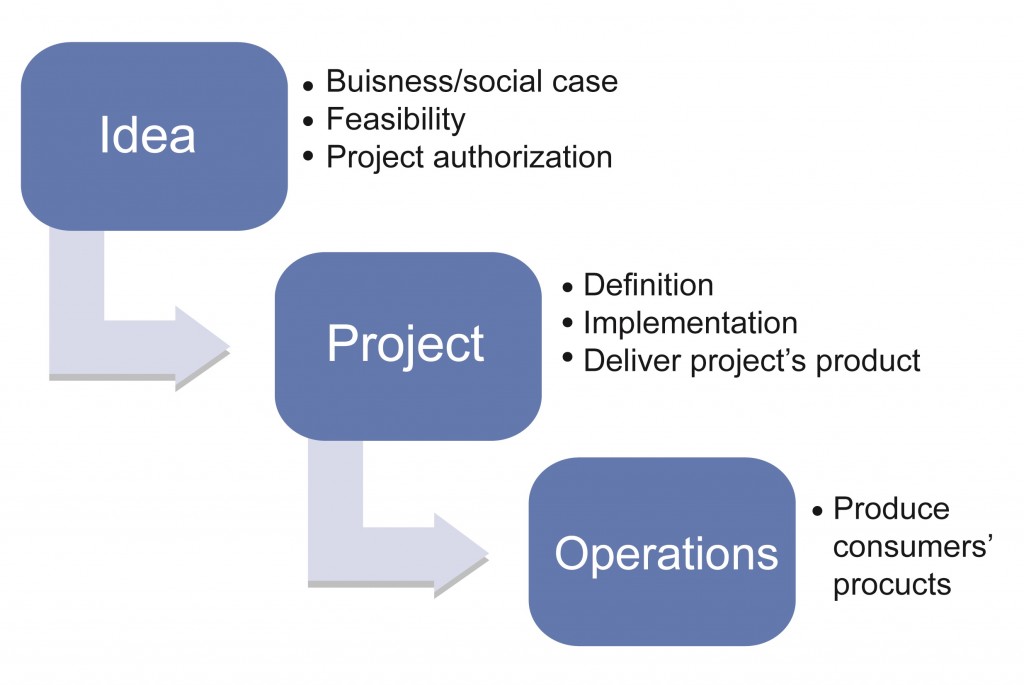
The challenge is that many business schools do NOT teach project management. Investment companies might not understand project management. They are probably blinded with the $ sign, forgetting that many businesses fail within the first two years. Most new businesses (SME) do not last beyond the five-year point. The consequences? Investment lost.
Then, the question is: how to manage these business ventures?
Maybe the answer is to understand that we need an integrated approach. An approach that blend project management and business management. In other words, we need the science and art of project management to help us go from concept to closure of the project. Remember, closure of the project is the commencement of the business operations.
Let us look at an earlier figure again:

Earlier, we included this figure as part of how to manage a C2C Project. What many do not realize is that we can use the same model for LAUNCHING the new venture; maybe with a twist or more coverage than if this was a project for an existing organization.
Linking the models
For example, let us dissect this model for a new venture.
- The discovery phase (concept stage) includes clarifying the concept of what the entrepreneur/investor wants to do.
- The feasibility stage includes many of the things that are covered in the traditional business plan. We cover market studies (demand and supply), we cover the cost and financial modeling, we cover risks, and much more.
- Next, we have the requirements stage. For projects in existing organizations; the focus is on the technical requirements for the project. However, if you are launching a new business, you will need to identify the requirements for the new business.
I do not want to cover all of the steps here. However, it is crucial to say the following:
As an entrepreneur, you MUST start with this model. You should follow the steps from the concept stage to the definition stage. The output of the definition stage is your proposal to an investment company or funding agency. The definition stage is the place to do a detailed project plan that should help continue the project until the end of the project part, the closure of the project and commencement of operations. This plan will address operations (beyond the handover). It can address and update the financial model and plan the activities for the operational readiness stage.
Closing Comments for this section
What we are saying is the following:
- When you hear the word project, understand the context; are we talking about a task, a partial project, a C2C project, a new asset in an existing company, or a new venture?
- Understand that managing each part is different and require a different approach.
- Learn about the potential gap in launching a new venture and the need for the missing link, project management.
A few questions for the readers to ponder about:
- If you are an entrepreneur, do you understand what we are presenting here and that project management could be the difference between success and failure?
- Investment companies or funds: do you realize that one way to minimize the threats of losses is to look beyond the traditional business plan and requires that investment proposals must include the plan to go from requirements to commencement in addition to management after start-up?
Click on the image for the video.
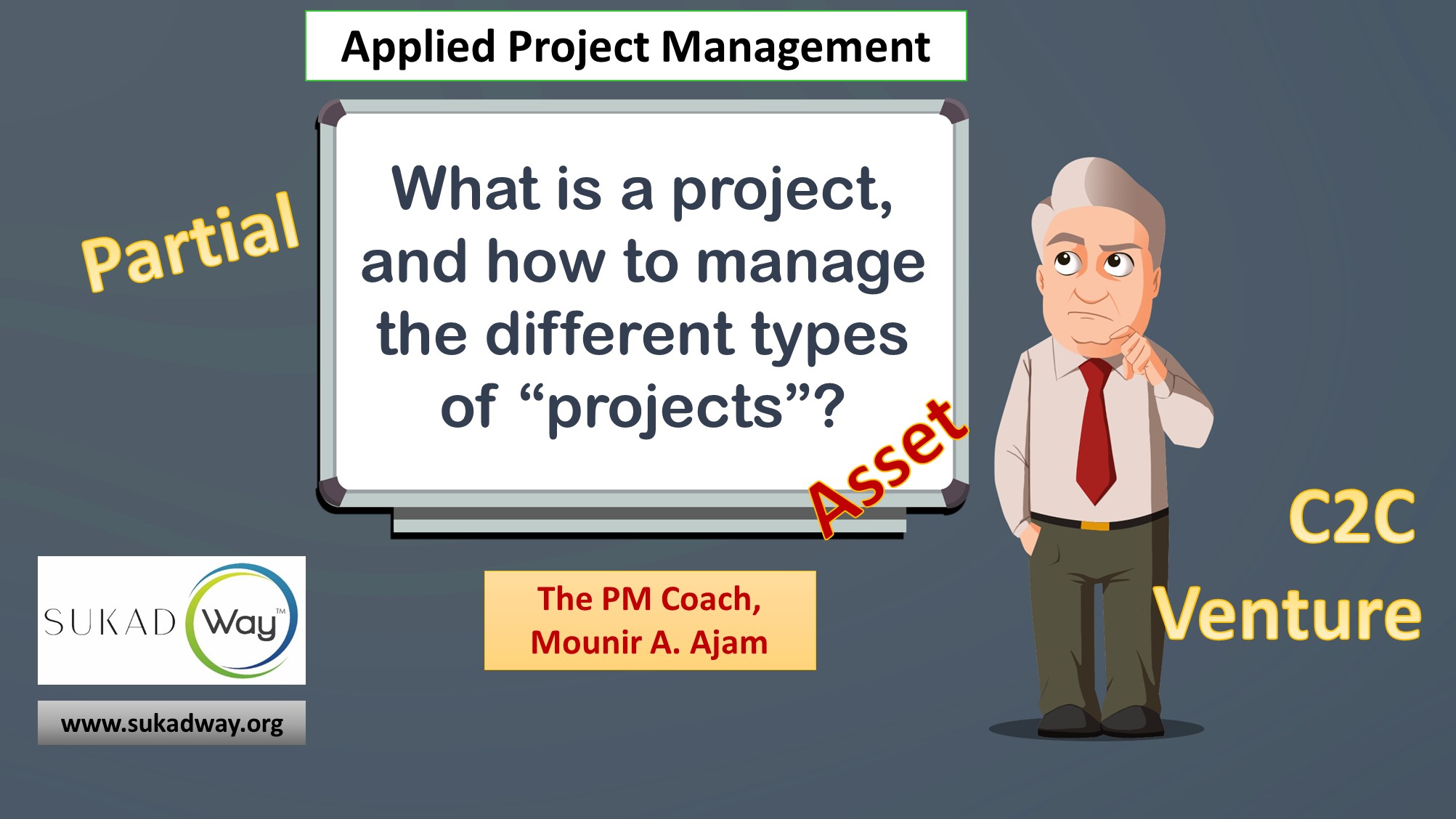
Do all projects need project management?
A good colleague, Mr. Bill Duncan, suggested to me addressing “the question of whether all projects require project management, and if so, to what degree.”
Unfortunately, I got the message after I recorded the video and this topic deserves a dedicated video. However, it is useful to touch on this point here.
The first challenge that we have to clear is the term project, in the context of whatever scenario that we have. For example, is the speaker using this term out of convenience to mean going out to dinner with friends, or preparing a meal for my kids? Or is the person talking about a task? A third choice might be a “real project” but a simple project. How to differentiate and manage?
For the first two scenarios, we are managing tasks. Maybe an old article could help in this situation; click here. For managing tasks, this recent video that I recorded part of our Youth Empowerment Series could be useful, click here.
For the third category, simple projects, these past articles could be useful; (1) click here and (2) click here.
Summary
If you do not want to read the articles or view the video at this point, we can give you the elevator speech here. For tasks, you need task management skills; no real use of project management or no need for a formal methodological approach. For simple projects, if they are personal project then may be common sense is enough. If they are part of an organizational activity, then a formal process would be useful. However, we always advocate the concept of Adaptive Project Management or fit-for-purpose tailored methods.

Trackbacks/Pingbacks